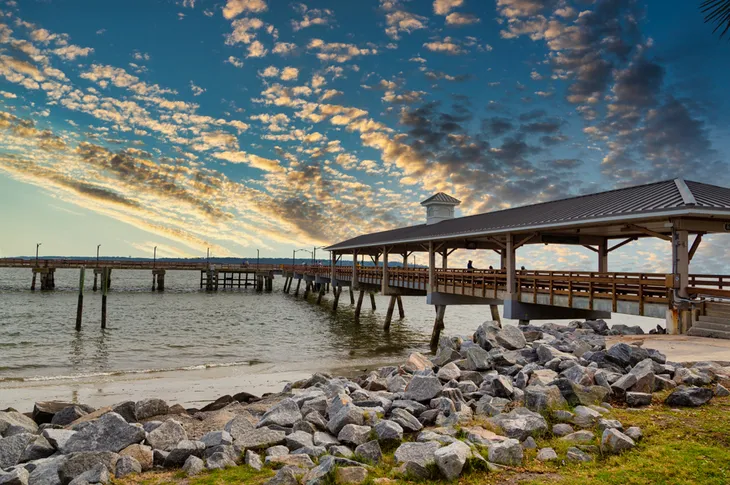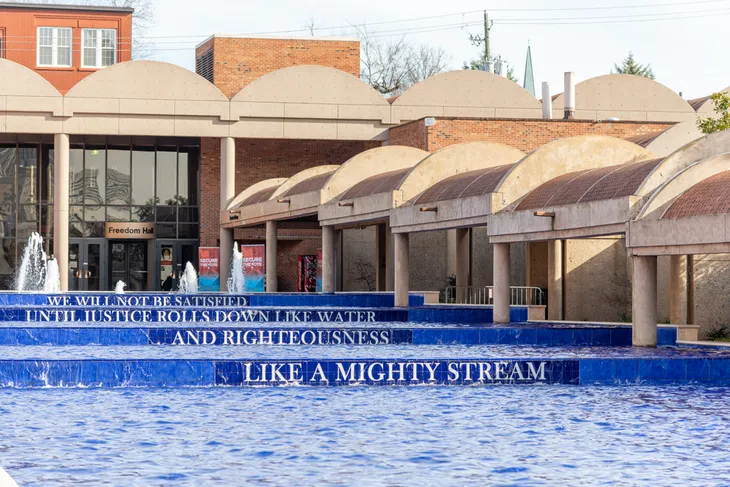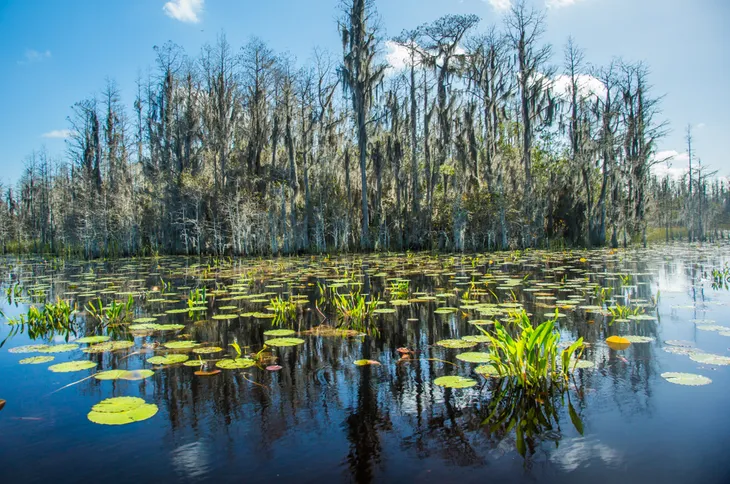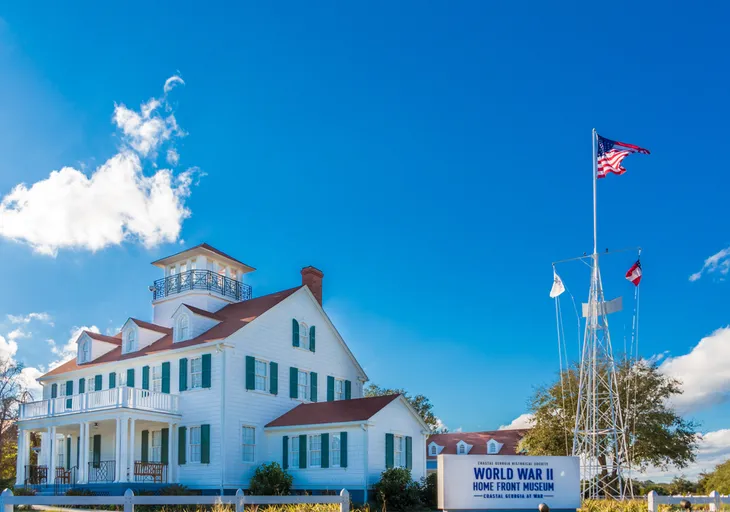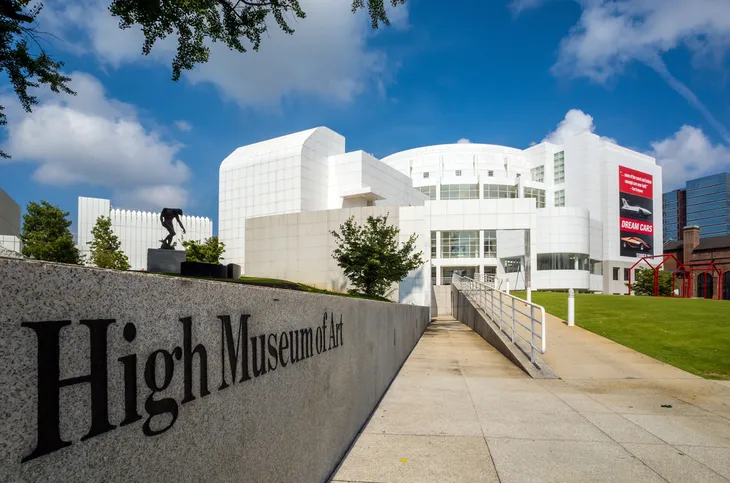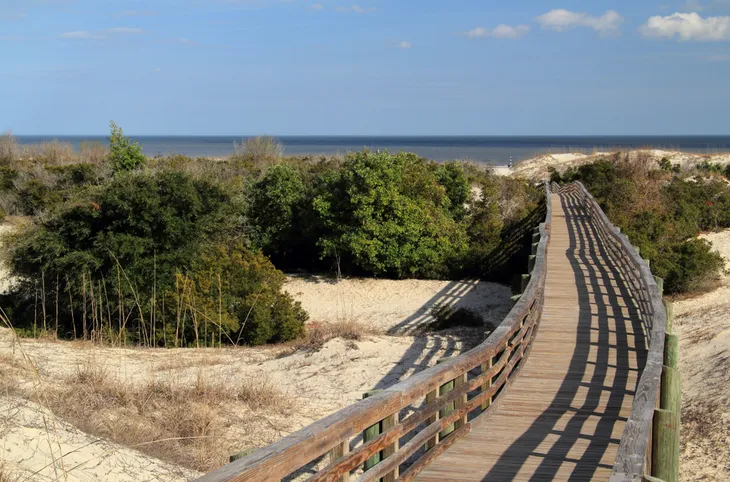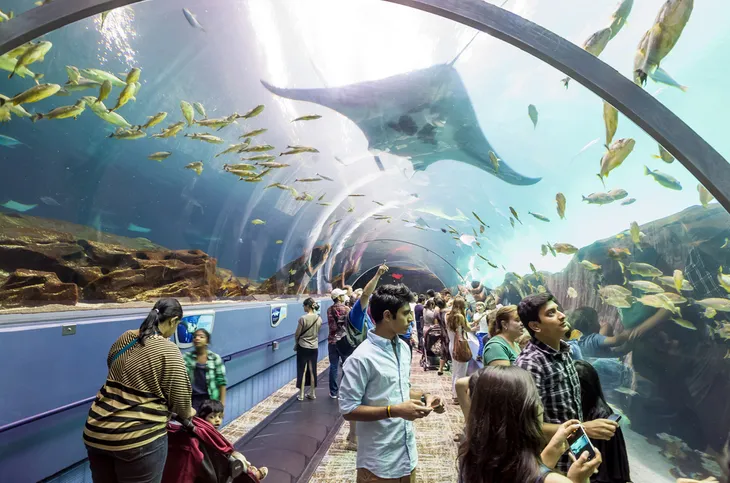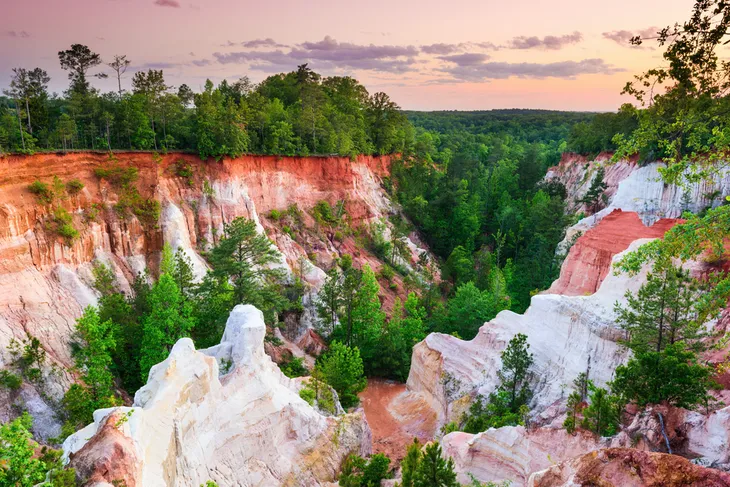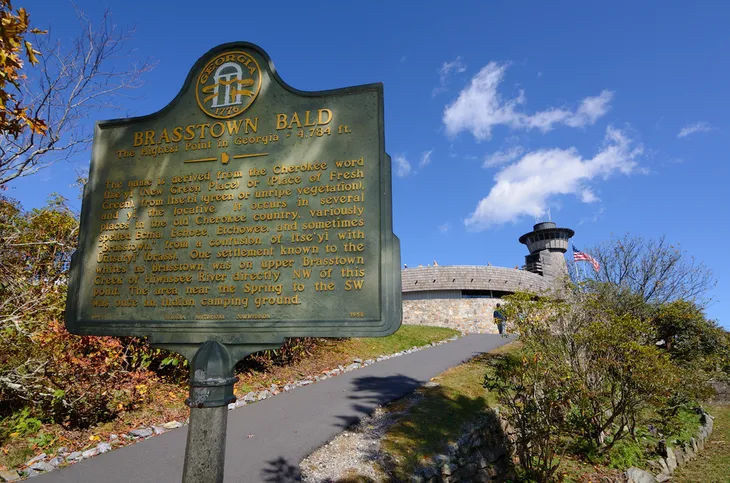- Georgia is the largest state east of the Mississippi River and offers exciting attractions for all ages.
- Its diverse landscape encompasses beautiful mountains, rolling foothills, and picturesque shorelines.
- Expect humid summers and mild winters, although areas near the mountains tend to be cooler while the southern coast is more subtropical.
Whether you want to play on a beach, hike up a mountain, or explore cultural attractions, Georgia offers plenty of opportunities for adventure. Plan a road trip through the Peach State and discover its spectacular natural landscape.
Or, opt for an urban experience and soak up the atmosphere in the uniquely modern capital of Atlanta and the beautiful historic city of Savannah. Wherever you land in Georgia, you’ll find an array of activities to keep you busy and create incredible travel memories. If Georgia is on your mind, then check out these 12 things to do.
1. Step Back in Time in Savannah
Walk down the cobblestone streets of the Savannah Historic District and experience a bygone era. Much of the original town plan, which traces back to 1733, is still intact. You can see restored mansions, manicured gardens, and original town squares.
The area is also home to museums and historic sites, including the First African Baptist Church, the oldest Black church in North America. To truly step back in time, take a horse-drawn carriage and admire the 18th- and 19th-century architecture, including Gothic and Greek Revival styles. This bustling area also offers plenty of restaurants, cafés, and boutiques.
2. Enjoy a Getaway to the Golden Isles
Just south of Savannah, you’ll find the Golden Isles, with warm, sandy beaches, charming towns, and a laid-back vibe that make it a perfect holiday destination. The Golden Isles consist of the port town of Brunswick on the mainland and four spectacular barrier islands.
Three of the islands — St. Simons Island, Sea Island, and Jekyll Island — are accessible by car. Little St. Simons Island is home to a private resort and can only be reached by boat. Visit the Golden Isles to bike, fish, golf, kayak, sunbathe, and enjoy the picturesque scenery.
3. Explore the Legacy of Dr. Martin Luther King, Jr.
The Martin Luther King, Jr. National Historical Park in downtown Atlanta pays tribute to a civil rights icon. Tour the birth home of Dr. King and listen to some of his speeches at the Ebenezer Baptist Church. The exhibits at Freedom Hall highlight the work of Dr. King, Coretta Scott King, Rosa Parks, and Mahatma Gandhi.
Spend a quiet moment at the International World Peace Garden and reflecting pool, and then pay your respects at the crypts of Dr. and Mrs. King. All activities are free, but tours of Dr. King’s birth home are limited.
4. Paddle Through Okefenokee Swamp
Located in the southeast part of the state, Okefenokee National Wildlife Refuge is home to North America’s largest blackwater swamp. You can take a boat tour through the darkly tinted waterways or paddle your own canoe past cypress forests, pine islands, and abundant plants and wildlife.
If you prefer to stay on land, then explore the nature trails, wooden boardwalk, or 7.5-mile-long Swamp Island Drive loop. You can walk, bike, or drive there. Climb the observation tower for great views, and visit the nature center to learn more about this fascinating wilderness setting.
5. Follow Georgia’s World War II Heritage Trail
The Georgia World War II Heritage Trail is made up of 10 museums and historical sites. See historic aircraft at the Commemorative Air Force Museum in Peachtree City, and find out how paratroopers were trained at the Currahee Military Museum in Toccoa.
Explore powerful wartime stories at the National Infantry Museum, and learn about the navy’s submarine force at St. Mary’s Submarine Museum. The sites are spread throughout the state, but the heritage trail website publishes separate itineraries for the north, central, and coastal regions, depending on which part of Georgia you’re visiting.
6. Ride the Blue Ridge Scenic Railway
Take a nostalgic journey through northern Georgia aboard the historic Blue Ridge Scenic Railway. The four-hour, 26-mile round trip begins in the mountain town of Blue Ridge. Choose a climate-controlled or open-air rail car and soak up beautiful views of the Toccoa River, Appalachian foothills, and picturesque countryside.
The first hour of the trip takes you to the charming sister towns of McCaysville and Copperhill, where you can visit antique shops, galleries, and eateries. After the two-hour layover, the train makes its return trip to Blue Ridge. The scenery is especially spectacular in the autumn with fall foliage.
7. Visit Atlanta’s Midtown Art District
The heart of Atlanta’s art community boasts an array of galleries, theaters, restaurants, and shopping. Visit the MODA Museum of Design, catch a performance by the Atlanta Symphony Orchestra, or take the kids to the Center for Puppetry Arts.
If you’re interested in fashion, then don’t miss the exhibits at the SCAD FASH Museum of Fashion + Film, located at the Atlanta campus of the Savannah College of Art and Design. The renowned High Museum of Art, with its collection of more than 17,000 classic and contemporary works, is also well worth a visit.
8. Take a Ferry to Cumberland Island
This undeveloped barrier island off the Georgia coast was once a plantation that grew citrus fruits and olives. And later, it was a winter retreat for the wealthy Carnegie family. Take the ferry over for a day trip, camp overnight, or stay at the upscale Greyfield Inn for a tranquil escape.
There are miles of unspoiled beaches and protected shores to explore, wild horses roaming free, and designated wilderness areas and historical sites to discover. Plan your visit to Cumberland Island in advance as there are limited places to stay and no shops.
9. Enjoy the Outdoors at Tallulah Gorge State Park
If your travels take you to the northeastern part of the state, then carve out time to visit Tallulah Gorge State Park. Its network of canyons stretches for 2 miles, with some gorges as deep as 1,000 feet.
This popular recreation area features an interpretive center, five waterfalls, hiking and biking trails, and a suspension bridge that lets you peer down at the canyon floor. Tallulah Falls Lake is a favored recreation area for boating, fishing, and swimming. Additionally, it has a sandy beach that’s perfect for relaxing and picnics. Tent, trailer, and RV campsites are available.
10. Discover Marine Life at the Georgia Aquarium
The Georgia Aquarium, located in Atlanta, is the largest in the United States. It has seven permanent galleries where you can see and learn about beluga whales, penguins, sea otters, manta rays, bottlenose dolphins, tiger sharks, sea lions, and other ocean creatures.
Your general admission ticket includes an immersive 4D theater experience and presentations by the aquarium’s trainers. To learn more about the work that goes on at the aquarium, add on a Behind the Scenes tour. You’ll get a little closer to the animals and visit areas otherwise restricted to staff.
11. Trek Through Providence Canyon
Located in the southwestern part of the state, Providence Canyon is affectionately known as Georgia’s Little Grand Canyon. Whether you hike nature trails along the rim or tackle the steep half-mile trail to the canyon floor, you’ll enjoy stunning views of the gorges in white, tan, pink, orange, red, and purple hues.
This state park has backcountry trails, several campsites, a playground, and picnic areas. Bring your own food as there are no concession stands or shops.
12. Visit the Highest Point in the State
Tucked in the Chattahoochee-Oconee National Forests, Brasstown Bald is the highest mountain in Georgia, with an elevation of 4,784 feet. The observation deck at the summit offers incredible 360-degree views. You can hike the steep but paved half-mile trail to get to the top or opt for a shuttle from the parking lot.
If you’re visiting on a clear day, then try to spot four states: Georgia, Tennessee, North Carolina, and South Carolina. Some visitors can even see the Atlanta skyline. After taking in the view, explore other trails or browse the exhibits inside the 8,000-square-foot mountaintop museum.


